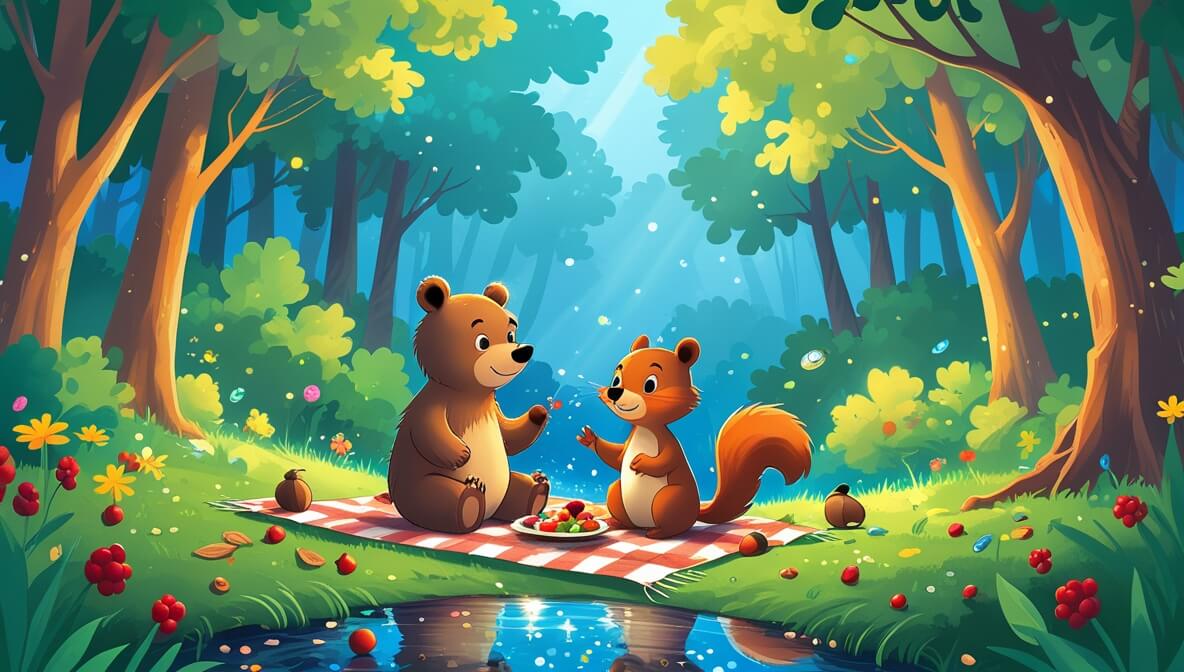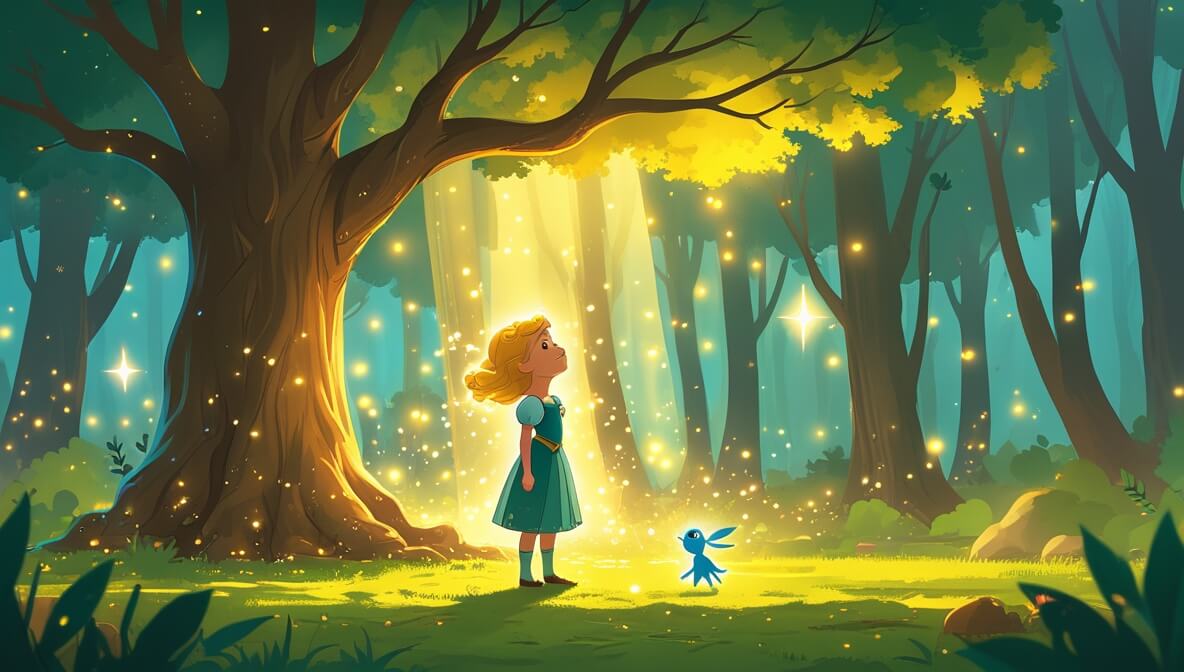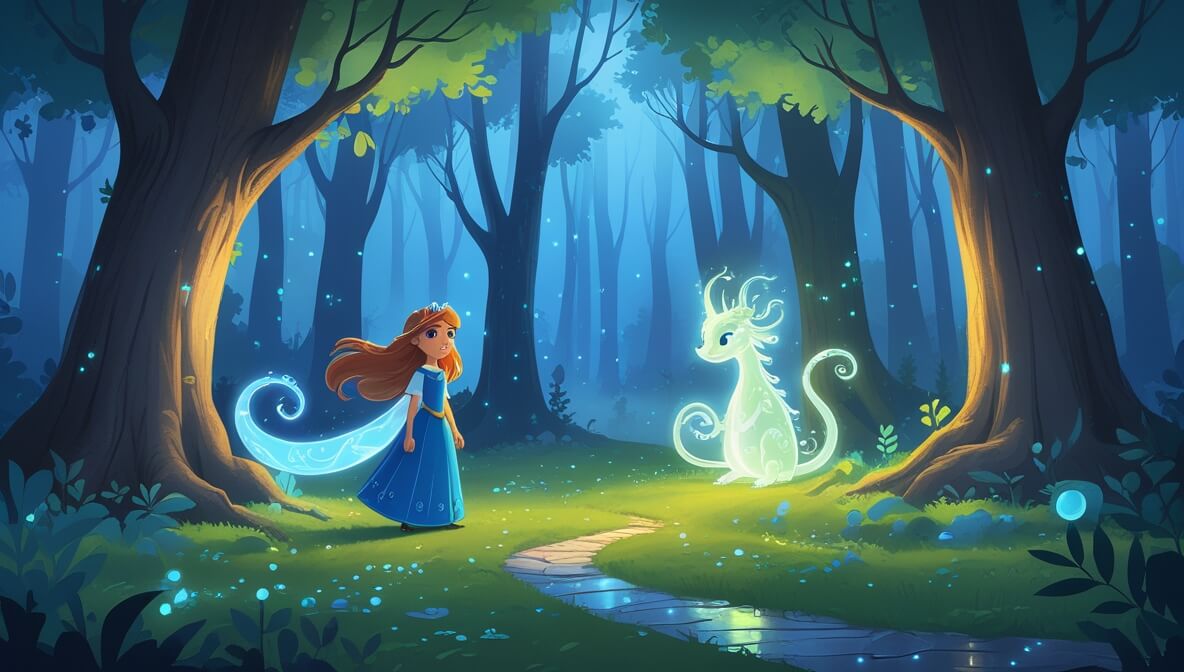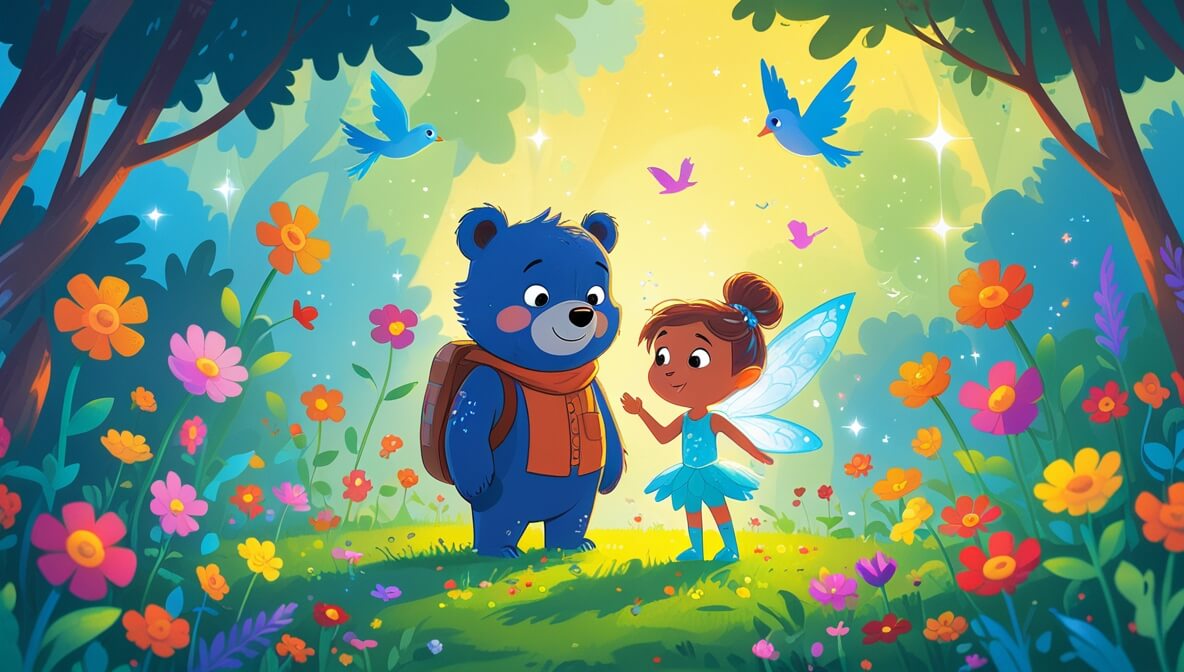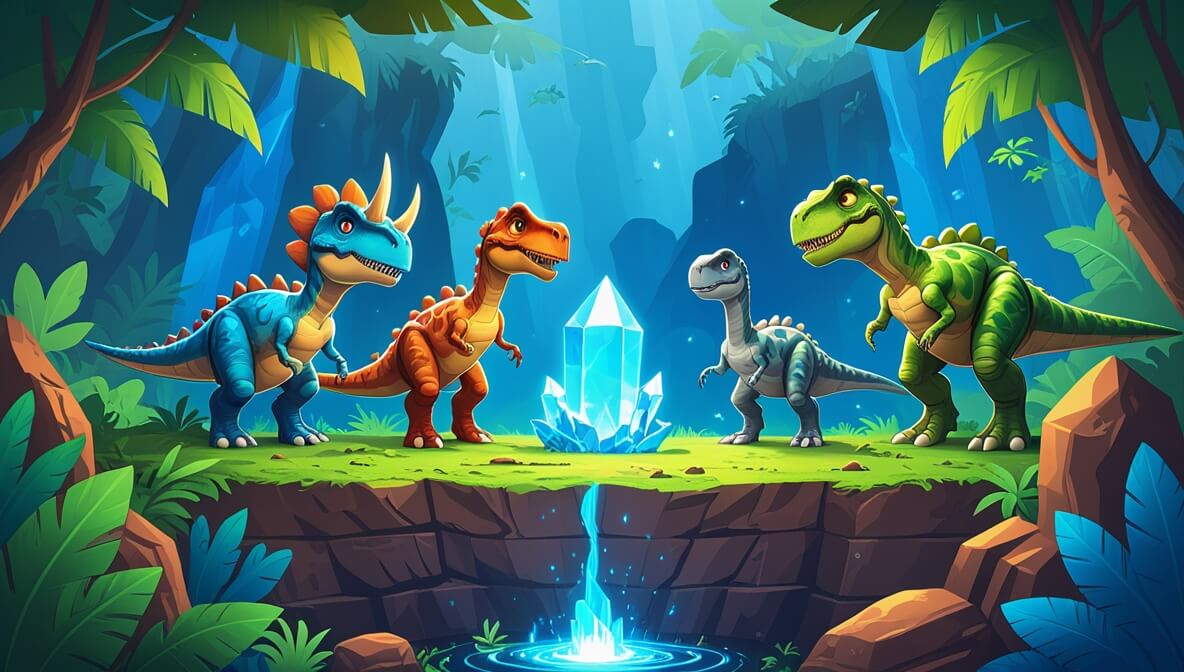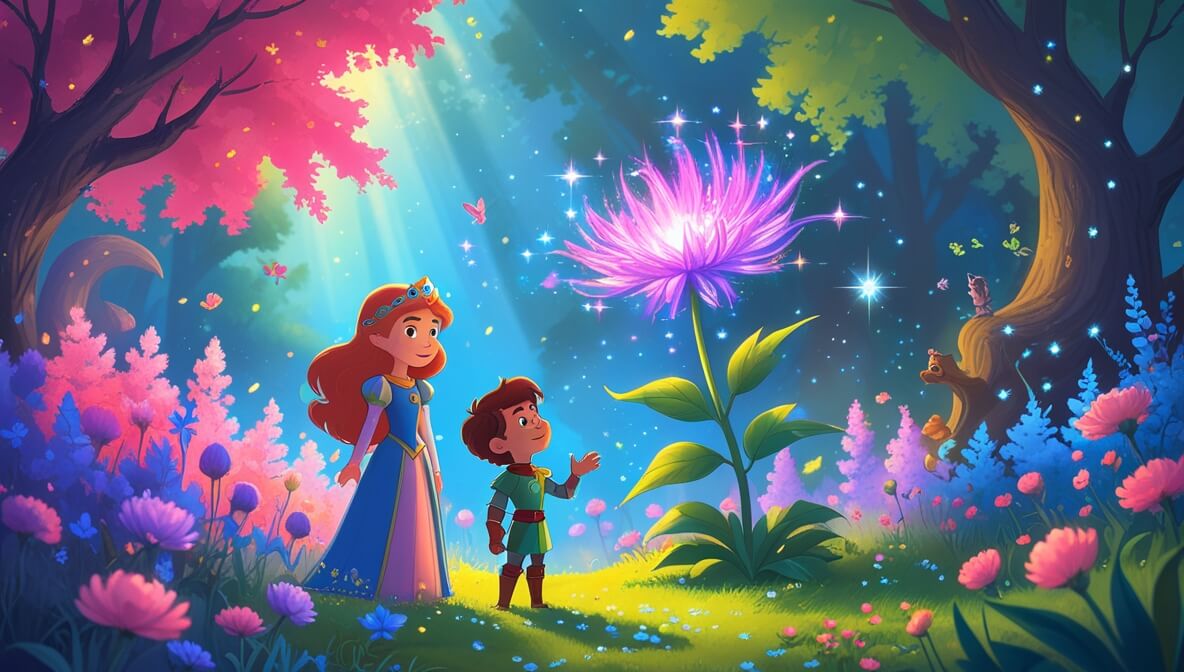A little bear named Buzzy loves exploring his forest home with his friend, Pebble the squirrel. Together, they discover the wonders of nature and the value of sharing.
Age Recommendation
0 – 4 years
Characters
Characters:
- Buzzy (a curious little bear with a big heart)
- Pebble (a playful squirrel who loves collecting acorns)
Story
Buzzy the bear woke up to the sound of birds chirping happily. His little nose twitched as he smelled the sweet scent of flowers in the breeze. Today, he was going to explore the forest with his best friend, Pebble the squirrel.
The adventure begins
With a big stretch, Buzzy hopped out of his cozy bed. “Let’s go, Pebble!” he shouted, his eyes sparkling with excitement. Pebble dashed down the tree, his fluffy tail bouncing. “I’m ready, Buzzy!” he chirped.
The hidden stream
Together, they wandered through the tall trees, the sunlight dancing on their fur. Suddenly, they heard a soft whoosh and found a hidden stream. The water sparkled like diamonds, and they giggled as they splashed around.
The surprise picnic
Feeling hungry, Pebble shared his stash of acorns with Buzzy. “Thank you, Pebble,” Buzzy said, munching happily. They decided to have a picnic by the stream, sharing everything they had.
A lesson in sharing
As they nibbled on their snacks, Buzzy realized how nice it was to share. “I’m glad we’re friends,” he said, giving Pebble a warm hug. Pebble smiled, “Friends make adventures more fun!”
The end.
Moral of the Story
Sharing with friends makes every adventure more enjoyable and strengthens the bonds of friendship.
Questions to Think About
- Why do you think Buzzy and Pebble are such good friends?
- What do you like to share with your friends?
- How did Buzzy feel when Pebble shared his acorns?
- What other adventures could Buzzy and Pebble go on?
- What do you think is the best part of having a friend?
Do You Know
- Squirrels can find their buried acorns even under a blanket of snow!
- Bears have an excellent sense of smell, even better than dogs!
Word Explorer
- Squirrel: A small animal with a bushy tail that loves climbing trees
- Stream: A small, narrow river where water flows
- Picnic: Eating food outside, like in a park or forest, often with friends
Emotions in the Story
- Excitement: When Buzzy was ready to explore with Pebble
- Joy: When they played in the sparkling stream
- Gratitude: When Buzzy thanked Pebble for sharing his acorns
Color Your Scene
Imagine Buzzy and Pebble having their picnic by the sparkling stream. The sunlight makes the water shimmer like diamonds. Draw Buzzy and Pebble sitting on a blanket, surrounded by tall green trees and colorful flowers.
Parents’ Corner
This story is a wonderful way to talk to your child about the importance of sharing and friendship.
Sharing: Discuss how Buzzy and Pebble shared their snacks and how it made their adventure more fun.
Friendship: Talk about how having friends can make any day brighter and how being kind to friends is important.
Exploration: Encourage your child to explore and discover new things, just like Buzzy and Pebble did in the forest.
Appreciation: Highlight the importance of saying thank you and appreciating the gestures of kindness from friends.
